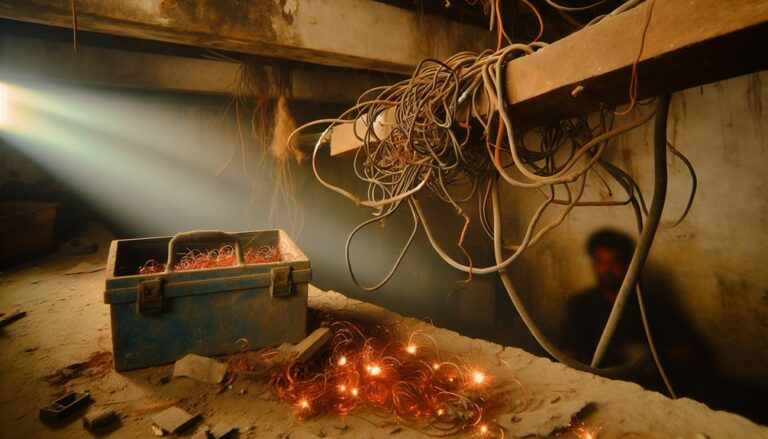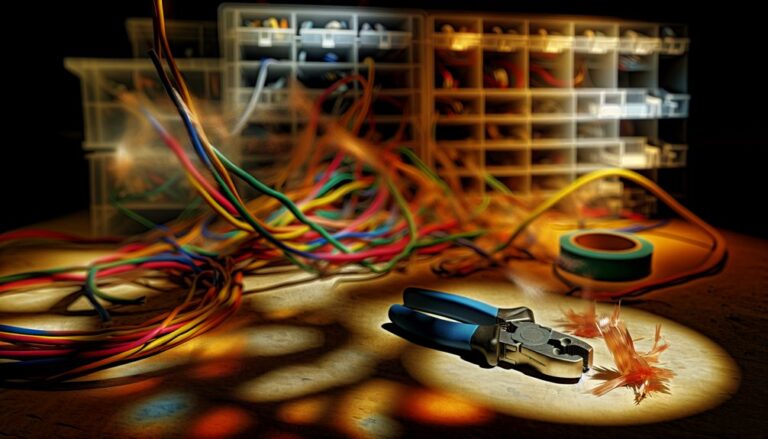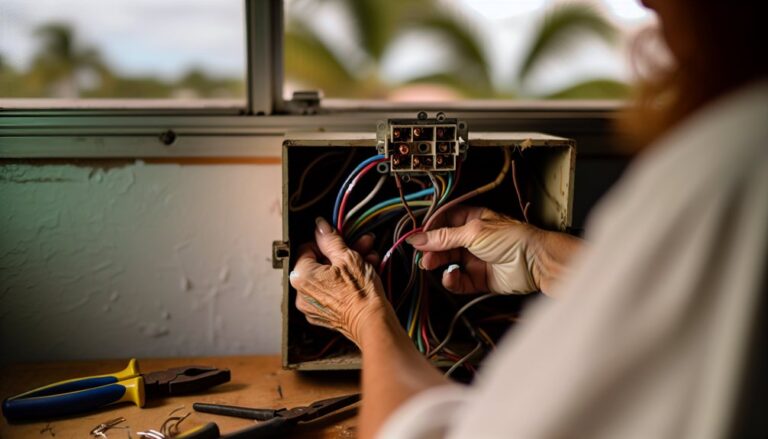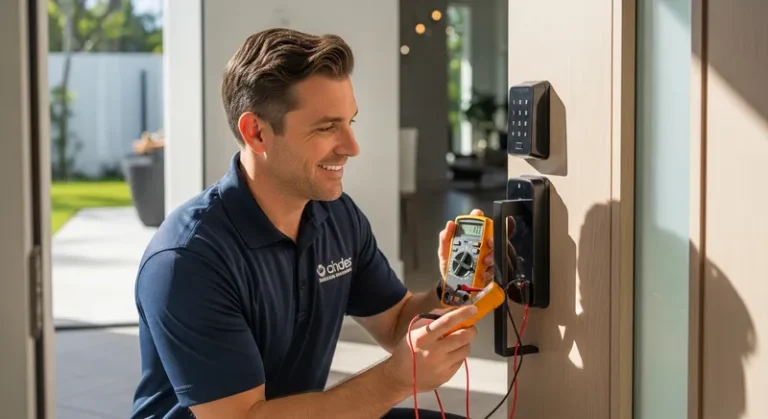Flickering Lights Troubleshooting
If you’re dealing with flickering lights, it’s essential to identify the cause. Check for loose connections, incompatible bulbs, or faulty dimmer switches. Inspect wiring for damage and guarantee proper grounding. Voltage fluctuations and circuit overloads can also lead to inconsistency. If flickering persists after troubleshooting, it signals more complex issues that need professional attention. Understanding these key aspects can help you maintain safe and efficient lighting; further insights await to enhance your troubleshooting skills.
Key Takeaways
- Check for loose bulbs and replace damaged or incompatible bulbs to resolve flickering issues.
- Inspect dimmer switches for compatibility with energy-efficient bulbs, as incompatibility can cause flickering.
- Look for signs of voltage fluctuations or overloaded circuits that may disrupt consistent lighting.
- Examine wiring for loose connections or damage; tighten or replace as necessary for safety.
- If flickering persists, consult a licensed electrician to address potential complex electrical problems.
Understanding the Basics of Flickering Lights
When you notice flickering lights, it’s essential to understand the underlying causes to address the issue effectively. Different light bulb types, such as incandescent, LED, and fluorescent, can exhibit flickering due to their inherent characteristics.
For example, LEDs may flicker when they’re incompatible with dimmer switches or if there’s a voltage fluctuation. Understanding how each bulb type interacts with your electrical system helps you pinpoint the problem.
Additionally, maintaining electrical safety is paramount; loose connections or outdated wiring can lead to hazards. Always make sure that fixtures are secure and inspect wiring periodically.
Common Causes of Flickering Lights
Flickering lights can often be traced back to several common causes that require careful evaluation. Understanding these can help you pinpoint the issue effectively.
| Cause | Description |
|---|---|
| Bulb Types | Certain bulbs, like CFLs and LEDs, may flicker due to compatibility issues or faulty drivers. |
| Voltage Fluctuations | Inconsistent voltage supply can lead to fluctuating brightness, often caused by overloaded circuits or poor connections. |
| Loose Connections | A loose light fixture or wiring can interrupt the electrical flow, resulting in flickering. |
Troubleshooting Light Bulb Issues
How can you determine if a light bulb is the root cause of flickering? First, check the bulb itself. If it’s loose or damaged, a simple bulb replacement might resolve the issue.
Inspect for signs of wear, such as:
- Burnt-out filaments
- Discoloration of the bulb
- Unusual flickering patterns
- Inconsistent brightness levels
If you’re using energy-efficient bulbs, verify they’re compatible with your fixtures. Sometimes, older dimmer switches can cause flickering with modern LED bulbs.
If the flickering persists after replacement, consider other potential causes. Remember, addressing bulb issues promptly not only enhances your lighting experience but also maximizes energy efficiency in your home.
Don’t let flickering lights disrupt your comfort; take action to verify a well-lit environment.
Investigating Wiring Problems
If you’ve ruled out light bulb issues, it’s crucial to investigate potential wiring problems that could be causing flickering lights. Check for loose connections, damaged wires, or faulty switches. Refer to your wiring diagrams to identify any discrepancies. Always prioritize electrical safety; turn off power before inspecting wiring.
| Problem Type | Solution |
|---|---|
| Loose Connections | Tighten connections |
| Damaged Wires | Replace damaged sections |
| Faulty Switches | Replace the switch |
| Overloaded Circuits | Distribute load evenly |
| Grounding Issues | Verify proper grounding |
Examining Circuit Overloads
While troubleshooting flickering lights, examining circuit overloads is essential, as excessive demand on a circuit can lead to inconsistent performance.
Start by evaluating your circuit capacity. If you’re running multiple devices on a single circuit, you might experience overload symptoms such as:
- Frequent tripping of circuit breakers
- Dimming or flickering lights
- Buzzing noises from outlets
- Warm or hot electrical outlets
Identifying these signs can help you understand whether your circuit is exceeding its capacity.
If so, consider redistributing your electrical load or upgrading to a higher capacity circuit.
Addressing overloads promptly not only improves your lighting but also enhances safety, reducing the risk of electrical fires.
Stay proactive to guarantee a stable electrical environment in your home.
Checking for Loose Connections
One common cause of flickering lights is loose connections within your electrical system. Start by inspecting all light fixtures, outlets, and switches for any visible loose wires.
Pay close attention to the connection points where wires attach to these components. A loose wire can disrupt the electrical flow, resulting in flickering. If you find any loose connections, turn off the power at the circuit breaker before making adjustments.
Tighten any loose screws or connectors securely to guarantee a stable connection. Additionally, check the junction boxes for signs of wear or damage, which could also contribute to flickering.
Regularly checking these aspects will help maintain a consistent electrical supply and minimize flickering issues in your home.
When to Call a Professional Electrician
Tightening loose connections can address many flickering light issues, but some situations require professional expertise.
If you notice any of the following, it’s time to call a licensed electrician:
- Frequent circuit breaker trips
- Signs of burning or melted wiring
- Persistent flickering despite troubleshooting
- Unusual buzzing sounds from fixtures
In these emergency situations, prioritizing safety precautions is vital.
You might be dealing with underlying electrical problems that could lead to fires or electrical shocks.
Don’t take risks with your home’s wiring; a professional can accurately diagnose and resolve complex issues.
Trusting a qualified electrician guarantees your safety and peace of mind, allowing you to enjoy a well-lit environment without concerns about potential hazards.
About Us
We understand that electrical issues can be stressful and overwhelming. That’s why we are here to lend a helping hand and provide you with the best electrical services in town. As a team of experienced electricians, we take pride in our ability to solve any electrical problem with precision and care.
Pages
Follow us
© 2025 By Electrician Fort Lauderdale Today







